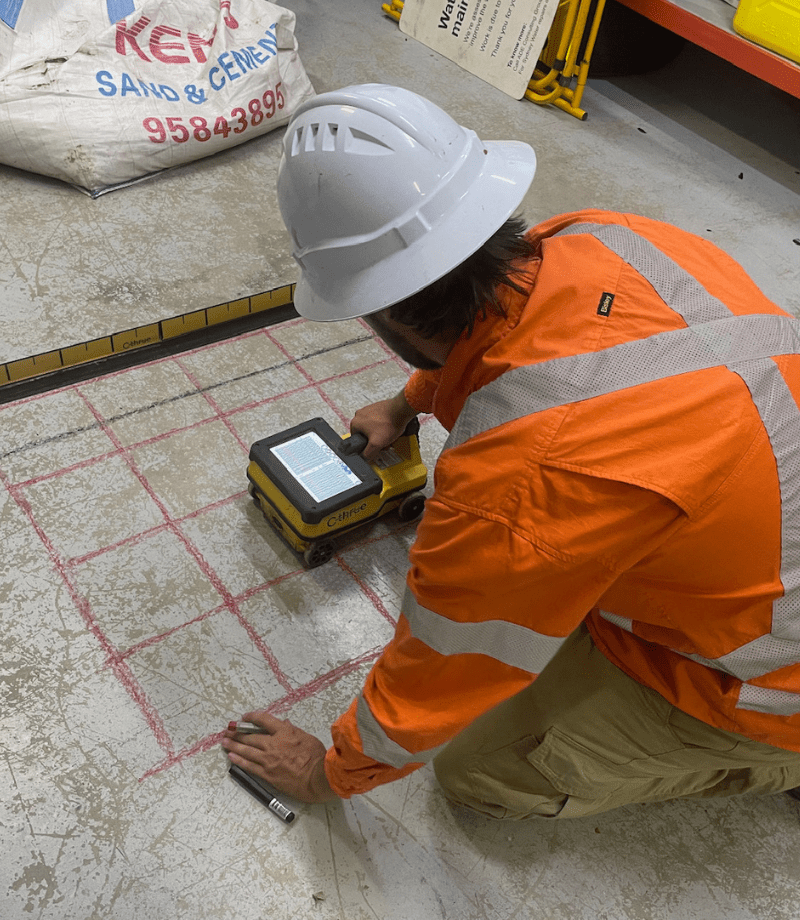RainierGPR Service Areas: Leading Concrete Scanning Solutions Across Regions
RainierGPR Service Areas: Leading Concrete Scanning Solutions Across Regions
Blog Article
Enhancing Task Preparation and Execution Via Advanced Concrete Scanning Methods
In the realm of job planning and accuracy, implementation and foresight are essential components that can make the distinction in between success and setbacks. Advanced concrete scanning techniques have actually emerged as a sophisticated device established to elevate the requirements of task monitoring within the building and construction industry.
Advantages of Advanced Concrete Scanning Techniques

Improved Accuracy in Task Analyses
Enhancing task assessments through advanced concrete scanning strategies dramatically boosts the accuracy and dependability of building evaluations. By employing advanced scanning modern technologies such as ground-penetrating radar (GPR) and 3D imaging, job groups can currently acquire detailed understandings into the condition of concrete frameworks, identifying possible imperfections or weak points that might not show up to the nude eye. This boosted degree of accuracy in project analyses allows building specialists to make even more enlightened decisions regarding fixing and maintenance approaches, leading to enhanced overall task results.
Moreover, the boosted accuracy in job assessments attained through innovative concrete scanning techniques aids in lessening the threat of unanticipated issues during the construction stage. By proactively finding concealed anomalies within concrete structures, such as rebar deterioration or spaces, project teams can address these problems at an early stage, staying clear of expensive hold-ups and rework later in the task lifecycle. Eventually, the improved precision in job evaluations facilitated by advanced concrete scanning strategies adds to better performance, cost-effectiveness, and top quality in construction projects.
Very Early Recognition of Structural Difficulties
Early discovery of structural obstacles plays a vital function in guaranteeing the stability and safety of concrete frameworks throughout the construction procedure. Identifying potential problems at a beginning permits for prompt intervention, protecting against pricey rework, routine delays, and security dangers. Advanced concrete scanning strategies, such as ground-penetrating radar (GPR) and 3D imaging, enable project groups to discover hidden issues, gaps, reinforcement layout disparities, and various other anomalies that can endanger the structure's security.
By implementing these techniques throughout the preparation and execution stages, building specialists can proactively address structural difficulties prior to they rise into significant problems. As an example, identifying insufficient concrete cover over reinforcement bars beforehand can prevent rust and structural weakening over time - RainierGPR Service Areas. Furthermore, determining variations in concrete density or density can help optimize material usage and make sure consistent stamina homes throughout the framework
Eventually, early identification of architectural obstacles via innovative concrete scanning not just boosts the general quality and resilience of the construction yet also adds to a more secure built environment for individuals and occupants.
Boosted Safety And Security Procedures in Building And Construction
The implementation of robust security procedures is critical in the building and construction industry to reduce threats and guard the health of stakeholders and employees. Building and construction sites are inherently unsafe settings, with potential risks varying from falls and devices malfunctions to structural failings. To boost safety procedures, building learn this here now and construction firms are increasingly taking on technical improvements such as wearable devices that keep track of employees' essential indications and identify prospective health and wellness problems in real-time. Additionally, the use of drones for site monitoring permits for normal security examinations without placing personnel in injury's means. Safety training programs have also progressed to include online reality simulations that offer hands-on experience in dealing with emergency situation scenarios. Additionally, the assimilation of expert system in security administration systems makes it possible for aggressive identification of prospective threats, permitting timely treatments. By prioritizing safety and security with the incorporation of sophisticated modern technologies and comprehensive training programs, building and construction projects can dramatically reduce mishaps and develop a safe and secure working atmosphere for all involved - RainierGPR Service Areas.
Streamlining Task Monitoring Processes
To optimize operational performance and ensure job success in the construction industry, a concentrate on streamlining task monitoring procedures is important. By implementing effective job browse around this web-site management procedures, building jobs can reduce hold-ups, decrease prices, and enhance total efficiency. One essential element of simplifying project administration is making use of innovative modern technologies such as Building Info Modeling (BIM) software program, which makes it possible for real-time collaboration, clash detection, and accurate task scheduling. Furthermore, the adoption of cloud-based project monitoring systems permits smooth communication amongst group members, instantaneous access to task information, and the capacity to track development in real-time.

Final Thought
To conclude, the usage of sophisticated concrete scanning methods offers many benefits for project preparation and implementation. These techniques provide better precision in task assessments, very early identification of structural challenges, boosted precaution in construction, and streamlined job administration procedures. Integrating these techniques right into job process can ultimately cause more effective and effective outcomes in building and construction projects.
Eventually, the boosted accuracy in job analyses promoted by advanced concrete scanning methods contributes to greater performance, cost-effectiveness, and top quality in construction tasks. RainierGPR Service Areas.
To enhance operational effectiveness and make sure task success in the construction industry, a focus on simplifying project administration procedures is necessary. By carrying out reliable project management processes, building and construction projects can lessen delays, decrease costs, and boost total productivity. By enhancing project management processes through technology integration, clear interaction, and data-driven techniques, construction jobs can attain better efficiency, cost-effectiveness, and effective results.
These methods offer improved accuracy in task evaluations, early Read Full Article identification of structural difficulties, improved safety and security actions in building, and structured task management processes.
Report this page